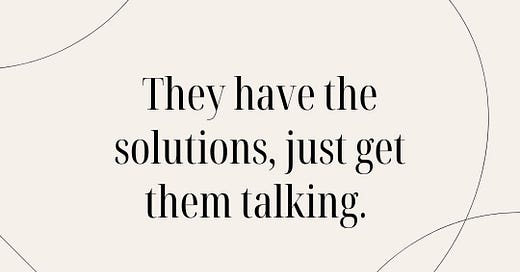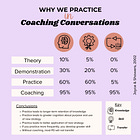Here’s What You Do If You Can’t Tell Them Sh*t and Your Audience Hates You
Happy summer PD season, friends.
Let’s say you’re on a district team—PD, special ed, academics, doesn’t matter. You walk into a school and they smell you. Not like actual smell (hopefully), but vibe. You don’t live their life. You don’t sit in front of 29 seventh graders after lunch on a Tuesday. So how dare you—how dare you—try to offer anything with the faintest whiff of suggestion?
Yeah… don’t.
Not unless you know what you’re actually doing. People living the work can sense when you’re faking it, phoning it in, or trying to “facilitate” without believing in their brilliance.
So what do you do?
First: Know the Rules of the Game – Andragogy 101
You're not teaching children. You're engaging adults—it’s different (mostly).
1. They Don’t Want Content. They Want Solutions.
Adults are problem-centered, not content-hungry. They want to know: How is this going to help me tomorrow? If you can’t make that connection crystal clear, they’ll tune out or—worse—turn on you.
2. They Are Not Blank Slates. They Are Human Google Drives.
Adults bring a lifetime of experience to any learning space. If you don’t respect that and find a way to pull it into the room, you’re wasting their time. (And they know it.)
3. They’ll Learn When They’re Ready—and Only Then.
Relevance is everything. If your “training” doesn’t connect to something they care about right now, forget it. No urgency = no uptake.
Now, I said mostly because, like kids, adults also need practice. Please read more about this.
Oh… did I mention practice?
Second: If You Can’t Tell Them, Let Them Tell Each Other
Let me tell you what doesn’t work:
A gallery walk of vaguely good ideas, followed by lunch and a hollow, “There were some great ideas in the room—keep talking!” Cue the exit survey. Cue the eye roll.
Let me tell you what does:
Belief-based development. It starts with one belief: The answers are already in the room.
When I became assistant superintendent at 29, I was completely out of my depth. I met another sup who told me something I’ve never forgotten:
“They have the answers. Just get them talking.”
But that doesn’t mean run a passive PD and hope magic happens. It means design for those answers to surface, spread, and stick.
Practical applications:
How to Build Belief-Based Learning (Even If They Don’t Trust You Yet)
Here’s a simple, powerful four-step process you can run tomorrow:
1. Ask a how question
Instead of dumping info, ask: How do you structure effective partner reading? or What’s your best move when small group time goes off the rails? Keep it relevant and grounded in real practice.
2. Circulate and capture the gold
Listen for concrete, replicable moves: pre-assign roles, use sentence frames, time-box it, etc. When you hear a gem, say:
“That’s great—would you be willing to share that with the group?”
3. Make the thinking public
Use a gallery walk, public doc, or verbal share-out to amplify what people are already doing well. Not only does this build ownership, it distributes leadership.
4. Stamp the belief
End by anchoring it in a core belief. For example:
“We believe all students need at-bats—even if they can’t read all the words yet. That’s why partner reading happens every day, in every lesson.”
It’s not just a move. It’s a move rooted in a mindset.
This Works at All Levels: Strategy, Policy, Culture
Instructional Strategy: Unpack high-impact moves from teachers and amplify them.
Policy Implementation: Instead of rolling out a new process top-down, let teams define the “how” based on shared values and conditions.
Leadership Development: Create safe spaces for leaders to say, “Here’s where I got stuck—and here’s what I tried.”
Final Plea: Design Like They’re Brilliant
If your job is to support adults in schools, design like they’re competent, creative, exhausted geniuses—because they are.
Start from belief. Anchor in clarity. Give people tools they can use, not strategies they’ll forget.
When you do that, the question isn’t “How do I get them to listen?”
It becomes: “How do I make sure more people get to hear what they just said?”










